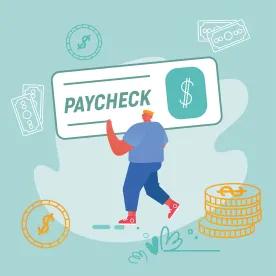All applicants for a loan under the Paycheck Protection Program (PPP) must certify that the current “economic uncertainty” makes the loan request “necessary to support the ongoing operations” of the company. The Small Business Administration (SBA) initially provided very little guidance on how to interpret this certification, except that it needed to be made in good faith. However, on April 23, 2020, the SBA, in consultation with the Treasury Department (Treasury), issued FAQ #31, which states that all PPP applicants must assess their economic need for a PPP loan, including taking into account “their current business activity and their ability to access other sources of liquidity sufficient to support their ongoing operations in a manner that is not significantly detrimental to the business.” FAQ #31 goes on to state that there will be a safe harbor for any borrower who received a loan prior to the issuance of this additional guidance, so long as the borrower returned their PPP loan by May 7, 2020 (i.e., their certification would be deemed to have been made in good faith so long as the money was returned in time). The safe harbor deadline was subsequently extended to May 18, 2020, with FAQ Question #47, which was published on May 13, 2020; however, there were still many questions left unanswered for companies seeking PPP loans. How would the SBA interpret “need”? What does it mean to have access to “liquidity” that isn’t “significantly detrimental”?
Understandably, the uncertainty surrounding the “necessity certification” left many small businesses concerned, especially in light of statements by federal government officials and politicians regarding oversight and audits. In particular, Treasury Secretary Steven Mnuchin and SBA Administrator Jovita Carranza announced on April 28, 2020, and the SBA formalized with the publication of FAQ Question #39 on April 29, 2020, that all PPP loans in excess of $2 million would be subject to an automatic audit. However, there still remained a significant amount of ambiguity with respect to the "necessity certification" and how it should be interpreted in light of FAQ #31. The SBA stated in FAQ Question #43 that additional guidance would be issued prior to the expiration of the May 14, 2020 safe harbor.
On May 13, 2020, FAQ Question #46 was issued by the SBA. This guidance states that any borrower who, together with its affiliates, received PPP loans in an original principal amount of less than $2 million will be deemed to have made the required need certification in good faith. The FAQ explained that the safe harbor was deemed appropriate by the SBA and Treasury because borrowers with loans below this $2 million threshold are generally less likely to have had access to adequate sources of liquidity in the current economic environment than borrowers that obtained larger loans (i.e., loans greater than $2 million).
Companies with loans greater than $2 million may still have an adequate basis for making the necessity certification; however, the analysis will be based on the company’s circumstances and will be subject to review by the SBA. In any event, FAQ #46 states that if the SBA determines the borrower did not have an adequate basis for the economic need certification, then the borrower will be asked to repay the loan. If the borrower repays the loan after receiving such notification from the SBA, then, according to FAQ #46, the SBA will not pursue administrative enforcement or referrals to other agencies based on the SBA’s determination with respect to the certification concerning the necessity of the loan request.
Takeaways from PPP FAQ #46
-
PPP loans under $2 million will be granted a safe harbor with respect to the necessity certification. Although such companies will not be audited with respect to the necessity certification, an audit or other government oversight may occur for other purposes and based on other factors.
-
For PPP loans in excess of $2 million, if the necessity certification is found to have been inaccurate for SBA purposes, then the borrower can repay the funds and avoid administrative enforcement or referrals to other agencies based on such inaccuracy.
-
While this new guidance is an attempt by the SBA to lighten the administrative burden on borrowers with loans under $2 million, any borrower may be called to account by the SBA, and will need evidence of expenses to document both their need for a PPP loan in the first place and for forgiveness calculation purposes.
-
There is currently no guidance with respect to whether a borrower can repay a portion of its PPP loan in order to get under the $2 million automatic audit and safe harbor threshold.
-
FAQ Question #46 speaks to PPP loans in an original principal amount of less than $2 million and greater than $2 million but fails to address loans of exactly $2 million.
For more information on the PPP, see our Primer, FAQ on the PPP, our article addressing SBA affiliation rules and our article on The Paycheck Protection Program and Health Care Enhancement Act. This alert is being issued as of May 14, 2020. Please note that future legislation, guidance and regulations could modify certain provisions of the topics discussed above.
ENDNOTES
[1] The introductory language in the FAQs states, “Applicants, borrowers and lenders may rely on the guidance provided in this document as SBA’s interpretation of the CARES Act and of the Paycheck Protection Program Interim Final Rules.”





 />i
/>i

